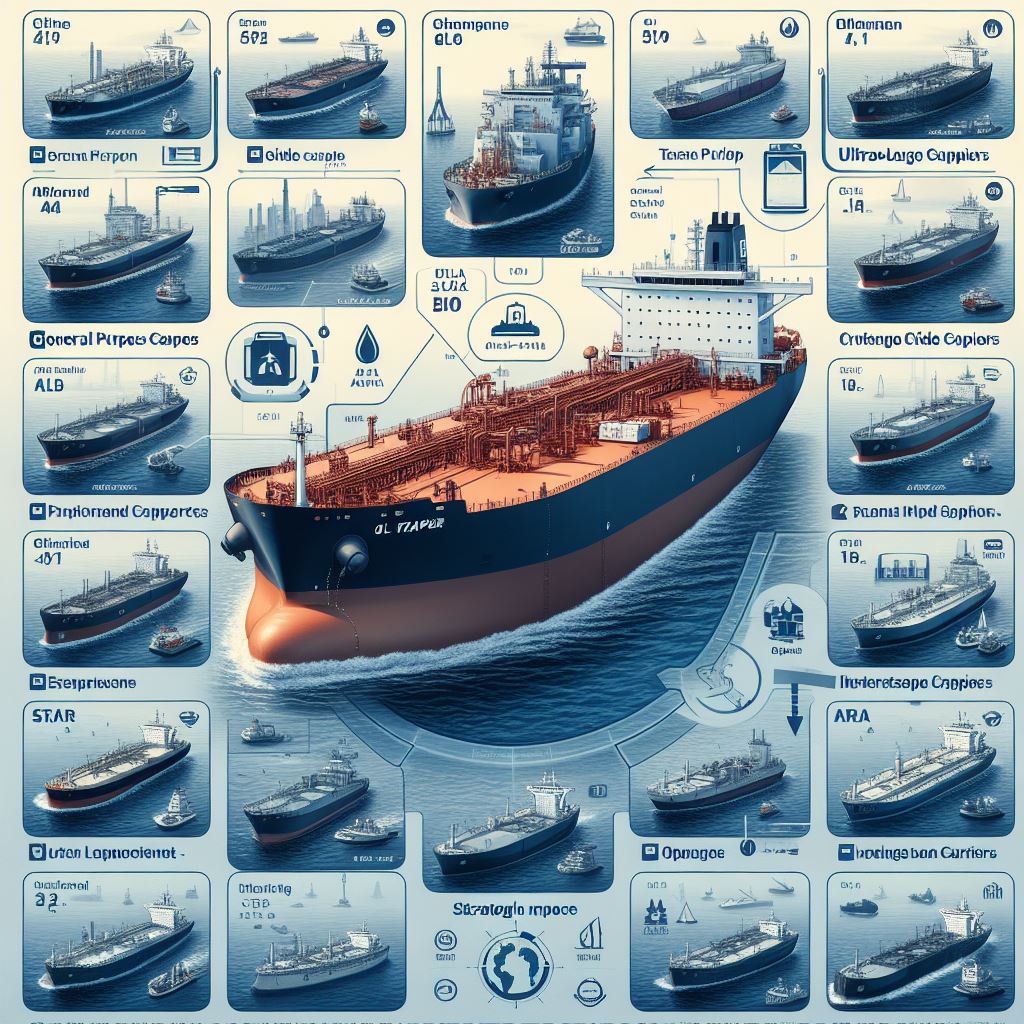

Comprehensive Guide to Oil Tanker Sizes: From GP to ULCC on the AFRA Scale
Dive into the diverse and intricate world of oil tankers, a cornerstone of the global oil trade. This guide explores the various sizes of oil tankers as classified by the Average Freight Rate Assessment (AFRA) scale and their critical roles in transporting crude oil and petroleum products.
AFRA Scale and Oil Tanker Classification
The AFRA scale classifies tankers by deadweight tons (DWT), a key measure of a ship’s cargo-carrying capacity. This system provides a standard framework for assessing shipping costs and logistics.
Understanding Tanker Types and Capacities
1. General Purpose (GP) Tankers
- Usage: Transport refined petroleum products over shorter distances.
- Capacity: Carry about 70,000 to 190,000 barrels of oil (approximately 10,000 to 27,000 DWT).
2. Medium Range (MR) Tankers
- Usage: Similar to GP but with slightly larger cargo volumes.
- Capacity: Range from 188,000 to 338,000 barrels (around 25,000 to 45,000 DWT).
3. Long Range 1 (LR1) Tankers
- Usage: Transport both refined products and crude oil.
- Capacity: Can carry 338,000 to 600,000 barrels of gasoline (around 45,000 to 80,000 DWT).
4. Panamax Tankers
- Usage: Optimized for the size limitations of the Panama Canal. Typically used to transport crude oil and refined products.
- Capacity: Generally carries around 488,000 to 600,000 barrels (approximately 65,000 to 80,000 tons DWT). New Panamax tankers stretch the cargo carrying capacity up to around 900,000 barrels (about 120,000 tons DWT)
5. AFRAMAX Tankers
- Usage: Fills a niche between LR1 and LR2 scales, primarily for crude oil.
- Capacity: Typically carries about 600,000 to 900,000 barrels of crude oil- equivalent to around 80,000 to 120,000 tons DWT.
6. Long Range 2 (LR2) Tankers
- Usage: Larger than LR1, these tankers are versatile for both crude and refined products.
- Capacity: Larger than LR1, with a capacity slightly less than Suezmax – usually between 900,000 to 1.2 million barrels (about 120,000 to 160,000 tons DWT).
7. Suezmax Tankers
- Usage: Named after the Suez Canal and used for crude oil transportation, they are the largest ships that can traverse the Suez Canal fully laden.
- Capacity: Around 1,000,000 to 1,500,000 barrels of crude oil, equivalent to about 130,000 tons to 200,000 tons deadweight.
8. Very Large Crude Carriers (VLCC)
- Usage: Handles most crude oil shipments globally.
- Capacity: Can carry between 1.2 to 2.4 million barrels of crude oil (about 160,000 to 320,000 tons DWT).
9. Ultra-Large Crude Carriers (ULCC)
- Usage: The giants of the sea, are used for the largest of crude oil shipments.
- Capacity: Transports 2.4 million to 4.1 million barrels of crude oil (around 320,000 to 550,000 DWT). Their size requires special facilities, limiting the number of ports they can access.
Chartering Oil Tankers: Choosing Based on Class
Chartering the right oil tanker requires careful consideration of several factors. The choice of ports, the volume of cargo, economy of scale, and the selection of shipping routes influences the tanker size and class to be chartered. For instance, Panamax Canal draft restrictions make them ideal routes for Panamax tankers, while ULCCs are suited for massive crude oil transport on unrestricted routes. Strategic planning is essential in selecting the appropriate class of tanker to optimize trade routes and maximize cargo efficiency.
Conclusion
Understanding the classifications of oil tankers is essential in maritime logistics. Each class serves specific roles, from regional product transport to massive crude oil shipments. This knowledge aids in making informed decisions for efficient and effective oil transportation in the global maritime industry.
Related posts


LNG Tanker Valuation: What Influences the Sale Price?

Buy and Sell Offshore Vessels






